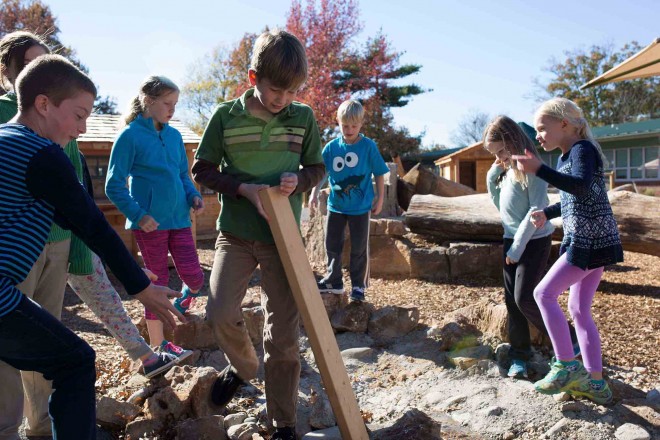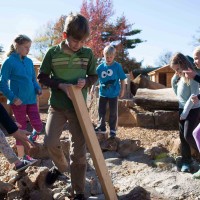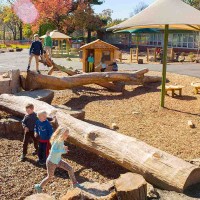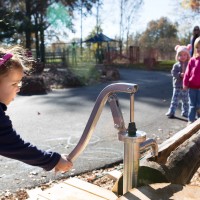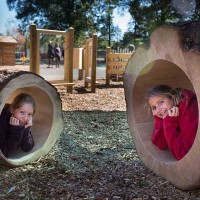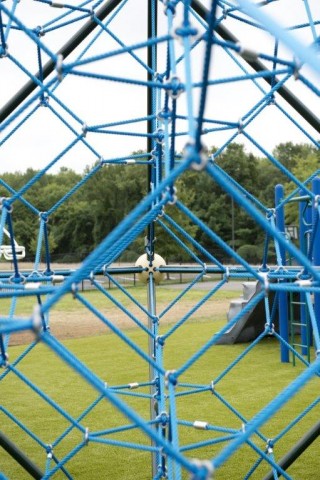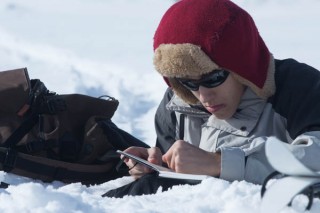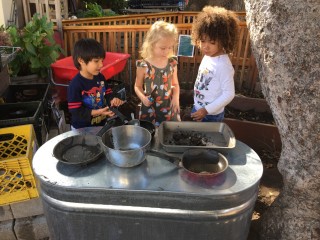With its self-contained creek, mud pit, hobbit holes, tree trunks, boulders, and newly planted native vegetation, Principia Lower School’s new playground is much more than a place for students to take a break from schoolwork.
As pre-kindergarten teacher Rissa Arens puts it, “The playground is no longer just a place to run around and get your wiggles out. It is an extension of our classroom!”
The playground redesign provides a more integrated and creative learning environment for students. And it also demonstrates Principia’s commitment to incorporate its abundant natural resources into the curriculum and to operate in an environmentally sustainable manner.
“A natural playground allows you to figure out how you’re going to use what’s available,” says science teacher Mary Jane Hoff. “Children are having to physically do something different and also intelligently create and imagine . . .” At the design phase, teachers said they “wanted to have more than a typical playground with lots of [prefabricated] equipment that ‘tells’ children how to play,” Hoff explains. What they wanted was a place that combined fun and adventure with the development and practice of inquiry, risk-taking, and problem-solving—crucial intellectual skills.
In fact, enjoyment, learning, and discovery took place even before the children set foot on the playground. Children (and teachers) loved observing crews and big machines at work right outside their classroom windows. The project foreman occasionally hosted “site visits,” explaining different aspects of the work, and the students learned a bit about the resources, coordination, and hard work required to take a project from conception to completion.
School families helped plant several hundred native species seedlings, which will reduce maintenance costs and attract animal, bird, and insect life. Two sunken rain gardens—lined with pebbles and plants to soak up run-off and reduce erosion—serve as additional science labs.
